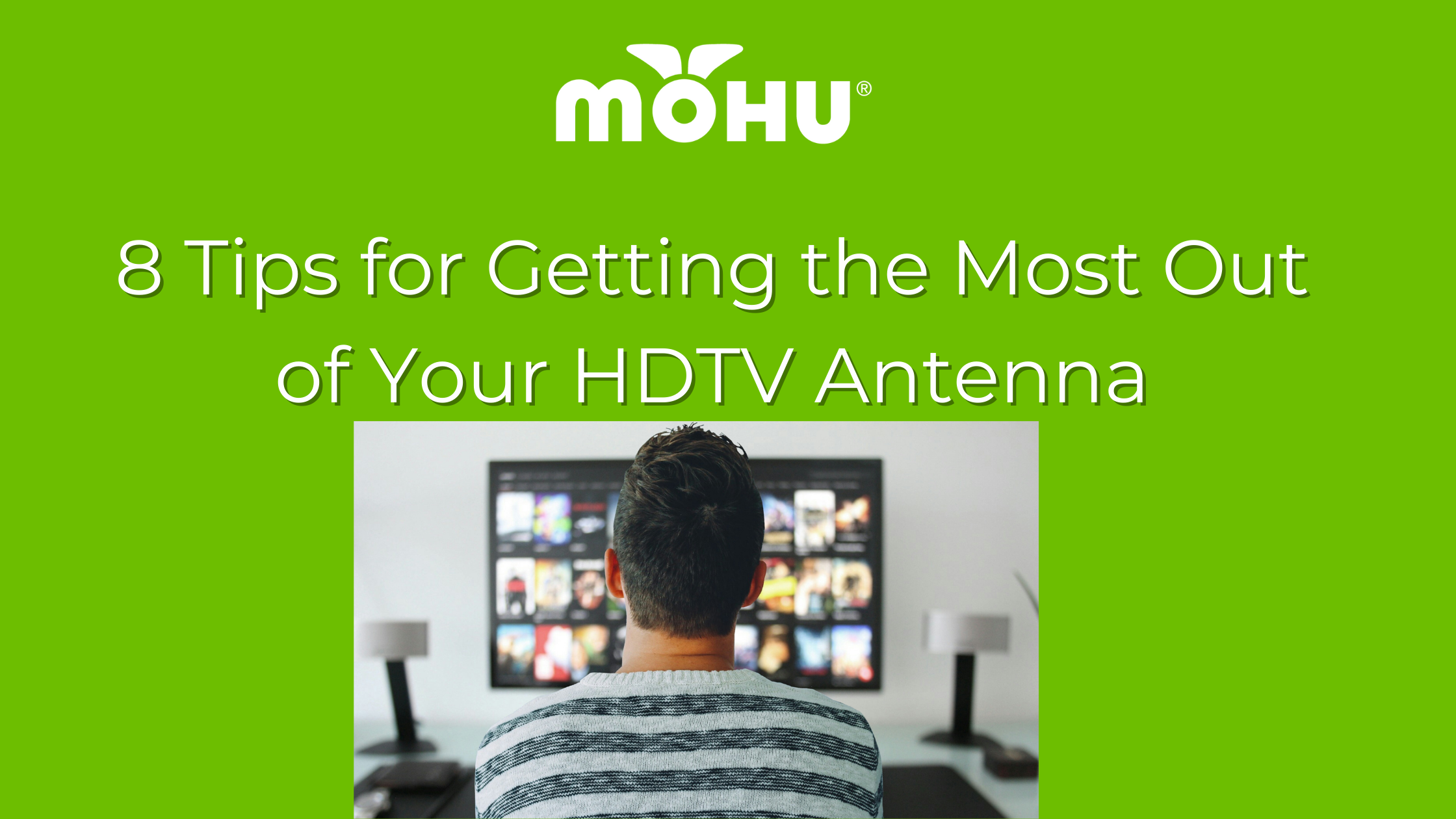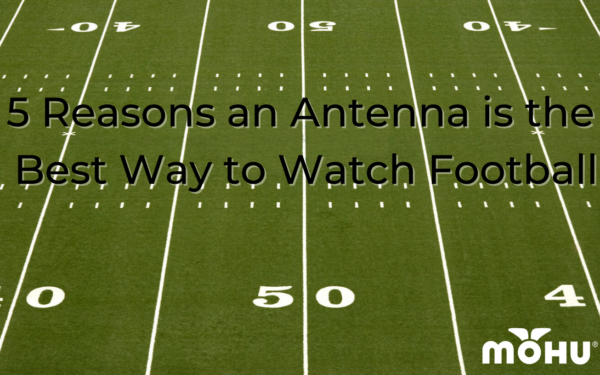So you’ve decided that you don’t actually need that channel solely devoted to fly fishing and have cut ties forever with your cable company. The trap is over. In addition to the plethora of video streaming options at your disposal, you’re probably wondering how you can get your hands on all of the free television that’s literally just floating in the air.
Forget whatever you’ve heard about nothing good comes free, because with the one-time purchase of an HDTV antenna, you will be reaping the benefits of free TV for years to come. To ensure you get the most out of your antenna, follow these tips.
1. Find the Sweet Spot
No I’m not talking about fiddling around with the bunny ears of a ten dollar antenna you got in the bargain bin of an electronics store. Flat antennas like the Mohu Leaf and its recycled companion ReLeaf (made from discarded cable boxes) are designed to be situated on a window, or if no window is available, a wall that faces the outdoors.
Once you’ve found a good spot, run the automatic tuner built in to your TV and let the scan run through. If you find that you’re not getting all of the channels you should be getting, consider moving the antenna and running the scan again.
2. Get Some Direction
If you’re still having difficulty obtaining channels, consult the FCC’s Reception Map. Plug in your ZIP code to bring up a list of television signals in your area. Then click on each channel to see which direction the signal is being broadcast from and move your antenna accordingly. With a better understanding of the direction the signals are originating from, you stand a better chance of getting the most out of your antenna. With that in mind…
3. Be Wary of Obstructions!
Have you ever gone to the movie theatre and found yourself sitting behind someone with a haircut inspired by Marge Simpson? If so, then your obscured view is akin to what happens to over-the-air (OTA) television signals when faced with obstructions in their journey to your antenna.
What are obstructions? Pretty much anything that hinders the line of sight from a transmitter tower to your antenna. Trees, buildings, mountains, even inclement weather can have an adverse effect on your reception.
So how do you combat pesky signal obstructions?
4. Get to Higher Ground
If you can’t get your antenna to a window or outward facing wall, try mounting it as high as you possibly can. This may involve investing in a longer cable, however the results can be fairly dramatic.
If you decide to get a longer cable, be aware that cable length can adversely affect the quality of the signal, so make sure you get a cable only as long as you need. That being said, using a beefier coaxial cable usually means you can use a longer length of cable without signal degradation. Which brings us to…
5. Getting a Better Cable
The Mohu Leaf and other similar antennas often come with everything you need to get going, including a coaxial cable that runs from the antenna to the back of your TV. Often the cable included is a “RG-59”, but you might consider opting for a more substantial “RG-6” cable. The RG-6 coaxial cable has better insulation, a better conductor and is designed for higher frequencies, which results in better reception and better reception equals more channels. Watch this in-depth comparison of RG-59 and RG-6 cables!
6. Add an Amplifier
In order to increase your reception you can try adding an amplifier, which boosts signal strength in order to pull in more distant channels. Be aware, however, that an amplifier can be detrimental to your reception if you live close enough to a transmitter, increasing noise and distortion. Your best bet is to try scanning for channels without an amplifier, and if the results aren’t great, go ahead and try it again with an amplifier.
7. Consider the Great Outdoors
Antennas come in all shapes and sizes, including indoor and outdoor varieties. Almost everyone can benefit from an outdoor antenna, as the walls in your own home can act as an obstruction for the temperamental OTA broadcasts. Even if you have an indoor antenna, you’ll find that getting it as close to the outdoors as possible (i.e., in a window) can enhance your signal reception.
Now that you’ve got your antenna in the best possible position, what else can you do to make sure you take full advantage of your antenna?
8. Get Yourself a Compatible DVR
A lot of people are afraid of cutting the cord because they perceive it as a technological step backwards, and that they will have to forego all of the convenience that they’ve become accustomed to, like the ability to record their favorite shows.
Fear not, there are a number of different DVRs out there that will work with your antenna, allowing you to record your favorite show, pause the big game for a bathroom break or skip all of those pesky commercials. Here’s a nice roundup of the most popular OTA DVR options out there today.




